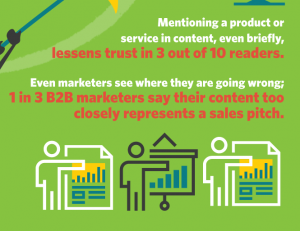Marketing a product can be very difficult. The product landscape is cluttered, leaving customers overwhelmed with information, options, and benefits. Product managers are often under pressure to accelerate sales cycles and get products out there. And when a product isn’t doing well? The solution for many companies is to cut the marketing budget even further to avoid catastrophic losses.
Would you be surprised to learn that failed products aren’t actually the result of this perfect storm of issues? The problem goes much deeper into the assumptions you make about marketing your products.
So how does today’s product team get new products into the hands of the customers that need them on a timeline that works for your company’s needs? The key lies in unearthing and eradicating the following three deadly assumptions you’re making about how to market your product.

Deadly Assumption #1: Features are more important than emotions in purchase decisions.
Most software executives are technical people at heart. They love building products, and they are analytic, techy, and all sorts of other geeky things. They’re comfortable talking about features because features are (or easily can be) quantified, and procurement-led RFPs reinforce the need for quantifiable proof one product is better than the other. Unfortunately, this leads logic-minded executives to fail to understand the role emotions play in purchase decisions.
At at some point in the sales process, buyers switch from being feature-focused to wanting to know two things: do I like you (because I won’t do business with people I loathe), and can your product do its job well enough that I won’t get fired?
These are two very emotional questions, and no amount of features can answer those questions or overcome objections. Ultimately, the emotional aspect trumps any amount of features. Companies who don’t understand that the buying process switches from features to emotions miss opportunities to frame their capabilities and value proposition in a way that helps sales.
A great example of this concept comes from Apple’s online store. The product description leads with features like screen size and clock speed, but does anyone really understand the benefits of different clock speeds? Most customers will say “Faster is better,” but we can’t internalize how much better that is. In the end, we make a decision and use the features to rationalize the purchase after the fact.
Deadly Assumption #2: Execution is more important than strategy.
Calling something “marketing strategy research” makes it seem like a big-budget item. But, truth be told, a good marketing strategy must definitively answer three questions:
- Where do your customers hang out (either in the physical or digital world)?
- What’s their process for learning new information?
- Which stage of awareness does your ideal inhabit?
How you go about answering those questions (and how much you spend doing so) is entirely up to you, but you can’t value execution over strategy. You can find the answers through customer development interviews, surveys, or personal experience, but you can’t find the answer to those three questions in better execution.
Deadly Assumption #3: We can underspend on marketing because the sales team will pick up the slack.
In the 1890s, John Wanamaker quipped that half his marketing was wasted. The trouble was he didn’t know which half. A lot has changed in the last 120 years; a lot of marketing spend may not produce tangible benefits, and it’s still incredibly hard to attribute sales to marketing. Combined with a predilection towards quantifiable features and a belief that the product is what customers buy and it leads companies to put all of their resources into improving the product before they consider more marketing.
In any other scenario, this might sound like a good idea. However, under spending on marketing means your sales team has to work that much harder. They spend more responding to statements like, “I’ve never heard of your company/product/service/widget,” and appointments get harder and harder to book. Rather than relying on your sales team to pick up the slack, spend more on marketing to help support your sales team’s performance.
If you’re struggling to market your product, don’t make these deadly mistakes. Instead, focus on replacing your dangerous assumptions with a more comprehensive strategy to get new products into the hands of customers than need them.
Business & Finance Articles on Business 2 Community(114)








